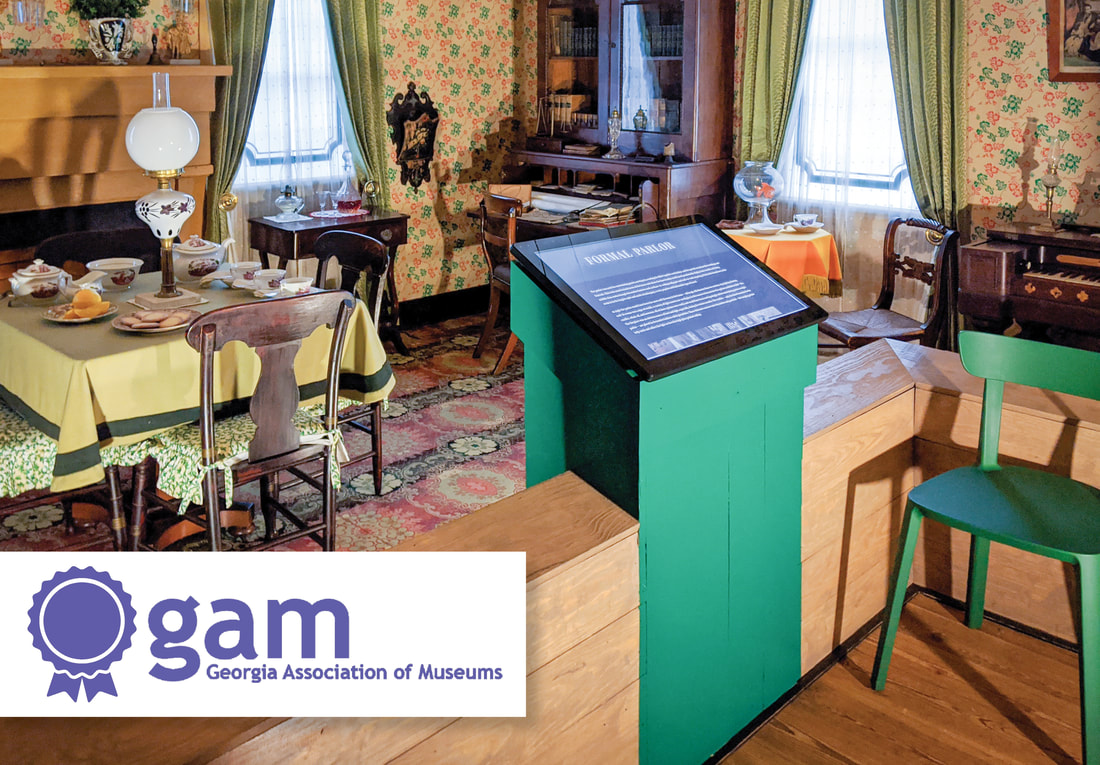|
The 1840s William Root House, one of the oldest homes in the Atlanta area, was originally the home of early Cobb County settlers Hannah and William Root. Threatened by demolition in the 1980s, the home was moved in 1990 by Cobb Landmarks & Historical Society and renovated for use as a house museum depicting middle class life in Antebellum Georgia. Since rescuing and restoring the house 30 years ago, Cobb Landmarks has been successful in attracting thousands of visitors to the museum every year. When Trevor Beemon became Executive Director of the Museum in 2014, he introduced a variety of new programs and events designed to help reinvigorate the site. Between 2013 and 2016, visitation numbers increased more than 300 percent. However, a lack of space limited the types of programs and number of visitors the museum was able to accommodate. By the end of 2016, it was clear: In order to better serve visitors, the Root House campus had to be enlarged. At that same time, Cobb Landmarks was approached by the Manning family about donating an 1830s log cabin to the organization. Originally located on Macland Road in Cobb County, the log cabin was occupied by the Manning family during the 1860s. Still owned by Manning family descendants in 2018, the family wished that the cabin could be preserved for future generations. With that in mind, the family generously donated the cabin to Cobb Landmarks, requiring that it be removed from their property. A plan to relocate the cabin to the Root House began to form, but the organization needed more land. The property occupied by the William Root House is leased to Cobb Landmarks, a private nonprofit, from the City of Marietta. On November 21, 2016, Cobb Landmarks presented a request to the City of Marietta for an additional .082 acres located immediately adjacent to the Root House. The space would be occupied by the Manning Cabin, with a modern addition to the cabin containing a much-needed Visitor Center with event, exhibit, and office space inside. The request was approved and finalized at a City Council Meeting on December 14, 2016. With additional land secured, plans moved forward. In 2017, Cobb Landmarks launched a capital campaign for the project titled The Next Generation. For The Next Generation concept plan, Cobb Landmarks turned to the award-winning architectural firm Historical Concepts. Historical Concepts’ work has been featured in national publications, including Garden & Gun and Architectural Digest. In addition to designing custom homes for clients across the country and multiple Idea Houses for Southern Living and Coastal Living, the firm has also provided master planning for redevelopment in historic communities like Senoia, Fairburn, and Fayetteville, Georgia. “As an architectural firm that studies historic precedent to inform our designs, we were intrigued by this vision to bridge past, present, and future,” said Historic Concepts’ Ryan Yurcaba about The Next Generation project. “We are honored to work with the forward-thinking team at Cobb Landmarks to ensure a purposeful future for an increasingly rare trace of Cobb County’s architectural vernacular heritage.” The Manning Cabin was moved to the William Root House campus in Marietta in September 2018. Funds needed for the project came to Cobb Landmarks in the form of donations from private individuals, Cobb Landmarks members, and a variety of foundations and sponsors. Plans for the new structure were completed by Olah Design Group, and Fortress Builders oversaw construction. Freedman Engineering Group provided engineering services. In addition to the new Visitor Center, The Next Generation project included remodeling and expanding the exhibits at the Root House, with a new exhibit space dedicated to examining the lives of Marietta’s enslaved population. Interactive touchscreen displays were also installed in each room of the house. The touchscreens give visitors the opportunity to examine family photos and documents, and to watch educational videos produced exclusively for the Root House. “The new exhibits at the Root House are fascinating,” said Marietta City Councilwoman Michelle Cooper Kelly. “It’s interactive. It’s a state-of-the-art platform. You can actually come in and learn about the Root family and the slaves that lived on the property,” said Kelly. On April 28th, the Georgia Association of Museums recognized the Root House Museum for excellence in exhibition theory, planning, and implementation. The recognition specifically commends the use of touchscreen technology and also recognized the interpretation of the slave experience on the property. “This award validates the important work Cobb Landmarks is doing at the Root House,” said Trevor Beemon. “It also reassures us that the use of technology in a historic house setting can be a successful way to provide information to contemporary visitors who have come to expect this type of presentation in a museum.” “Cobb Landmarks has really upped its game, and we are lucky to have such a terrific resource in our community,” said Dr. Jennifer Dickey, Coordinator of Public History and Associate Professor of History at Kennesaw State University. “I love taking my public history students to visit the Root House because I consider it to be an excellent model of how to interpret a historic house. The touch screens provide supplemental information that help visitors understand what they are seeing, and the addition of the cabin has made possible the interpretation of the enslaved workers who lived with and worked for the Root family.”
0 Comments
|
Cobb LandmarksWe are committed to empowering our community with an understanding of the events, people, and places that formed our past, so that we may all strive for a brighter future. Won't you join us? Archives
May 2024
Categories
All
|
|
You must think preserving local history is important or you wouldn't be reading this!
Did you know we're a 501(c)(3) nonprofit organization? That means we rely 100% on financial support from businesses, foundations, and individuals - people just like you! If you support our mission to share the stories and preserve the places that form our community, please consider getting involved! |
NEWSLETTERSign up with your email address to receive discounts, event reminders, and preservation updates.
|
MOST Viewed Pages |

 RSS Feed
RSS Feed
